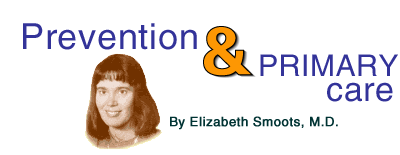
Dead Quiet: The Silence That Feeds Domestic Violence
Have you ever been in a relationship where you were intentionally hurt, threatened, or made to feel afraid? Did you speak to anyone about it? If not, you aren't alone. Most victims of domestic violence don't tell anyone what is happening. More than 90 percent of people don't even discuss relationship abuse with their physician. And fewer than 10 percent of health care providers routinely ask questions about violence at home. No wonder domestic violence is such an overwhelming problem -- it's perpetuated by silence.
Nearly one-third of American women report that they have been abused by a husband or boyfriend at least once in their life. Ninety-five percent of battering cases involve a female victim and a male abuser -- although men in straight or gay relationships, as well as lesbians, can be victims too. Many of the injuries sustained are serious; in a study of 218 battered women treated in an emergency room, 28 percent had to be hospitalized and 13 percent required major surgery.
To combat the silent storm of domestic abuse, the Family Violence Prevention Fund, a nonprofit organization working to end domestic violence through outreach and education, has released guidelines to assist health professionals in reaching out to battered women.
The guidelines urge health care providers to routinely screen all female patients over the age of 14 for signs of abuse. Screening should be conducted confidentially and in private, say the guidelines -- whether or not the provider suspects that domestic violence has occurred. In order to increase a patient's feeling of safety, the new recommendations also encourage providers to ask straightforward and nonjudgmental questions.
Signs of domestic violence
Everyone -- medical professionals as well as the public -- needs to understand how to recognize and talk about domestic violence. Partner abuse can take many forms, both physical and emotional. In its diagnostic and treatment guidelines for physicians, the American Medical Association (AMA) lists behaviors that constitute domestic violence. If even one of the following has happened in your relationship, it's a sign that you need to seek help.
Physical abuse
Pushing, shoving, slapping, grabbing, tripping, punching, hitting, kicking, or choking
Assaulting a partner with a weapon
Holding or restraining a partner
Abandoning a partner in a dangerous place
Refusing to obtain help when a partner is seriously sick or injured
Emotional abuse
Frightening and intimidating a partner with threats of harm
Extreme jealousy or possessiveness -- controlling whom a partner sees, what she does, whom she talks to, or where she goes
Constantly criticizing, name-calling, insulting, or using belittling language
Falsely accusing and blaming a partner -- attempting to make her feel guilty or crazy
Ignoring, dismissing, or ridiculing a partner's needs
Lying, breaking promises, and destroying trust
Controlling a partner's financial resources or ability to work
Sexual abuse
Making a partner perform sexual acts against her will, sometimes without protection against pregnancy or sexually transmitted diseases
Calling a partner sexually degrading names
Hurting a partner during sex or physically assaulting the partner's genitals
Armed with guidelines from the AMA, the Family Violence Prevention Fund, and other organizations, today's health professionals have the information they need to help combat domestic violence. Contact a health care provider if you or someone you know is being abused. The suffering will end only when we can work together to stop the silence -- by recognizing the signs of partner abuse and talking openly about domestic violence.
For assistance 24 hours a day, call the National Domestic Violence Hotline at 1-800-799-SAFE.
Elizabeth Smoots, M.D., F.A.A.F.P., is a board-certified family physician in Seattle, Washington. A fellow of the American Academy of Family Physicians, Dr. Smoots specializes in prevention and primary care medicine.
Related links:
Outside link: Family Violence Prevention Fund
Outside link: Information on state and local programs to curb domestic violence from the U.S. Department of Justice

